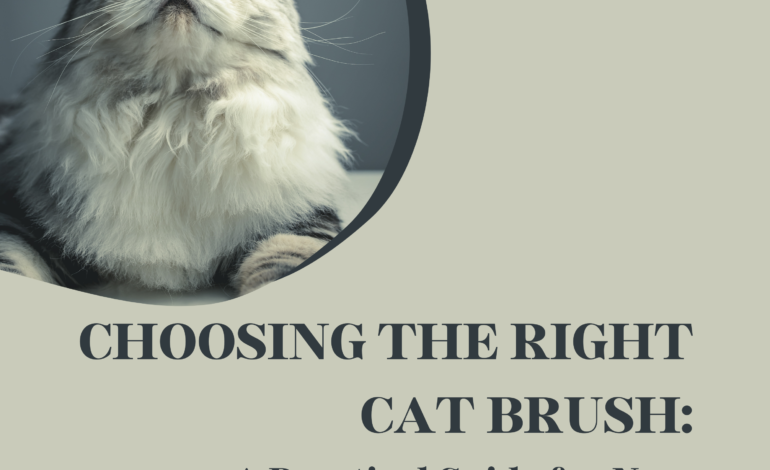Choosing the Right Cat Brush in Montreal: Long-Haired vs Short-Haired Cats
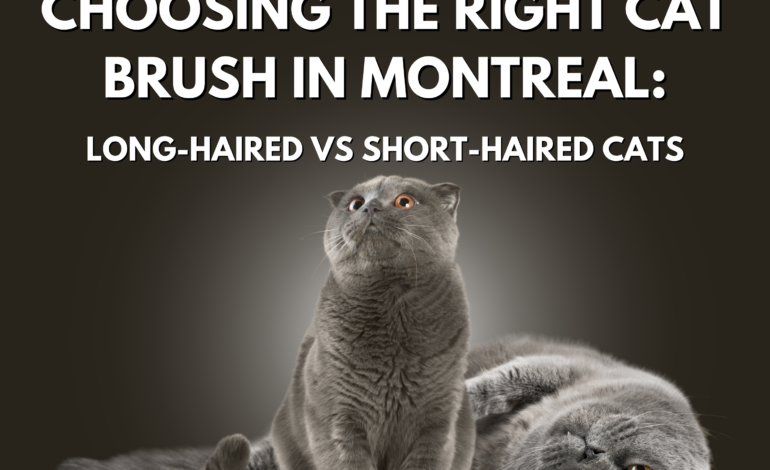
Montreal’s weather is dramatic—dry, freezing winters and humid summers. That means your cat’s grooming routine has to adapt with the seasons. Dry indoor heating in winter lowers humidity and can leave skin flaky and staticky, while spring–fall photoperiod-driven shedding ramps up loose fur and tangles. The right brush really does help: regular brushing reduces mats, distributes oils, and cuts hairball-causing loose fur—especially critical for long-haired breeds (e.g., Persians, where 12.7% present with haircoat disorders). (1)
In this guide, we’ll explore the best brush for long-haired cats and best brush for short-haired cats, plus practical grooming tips to keep your feline happy year-round.
Why Brushing Matters for Cats
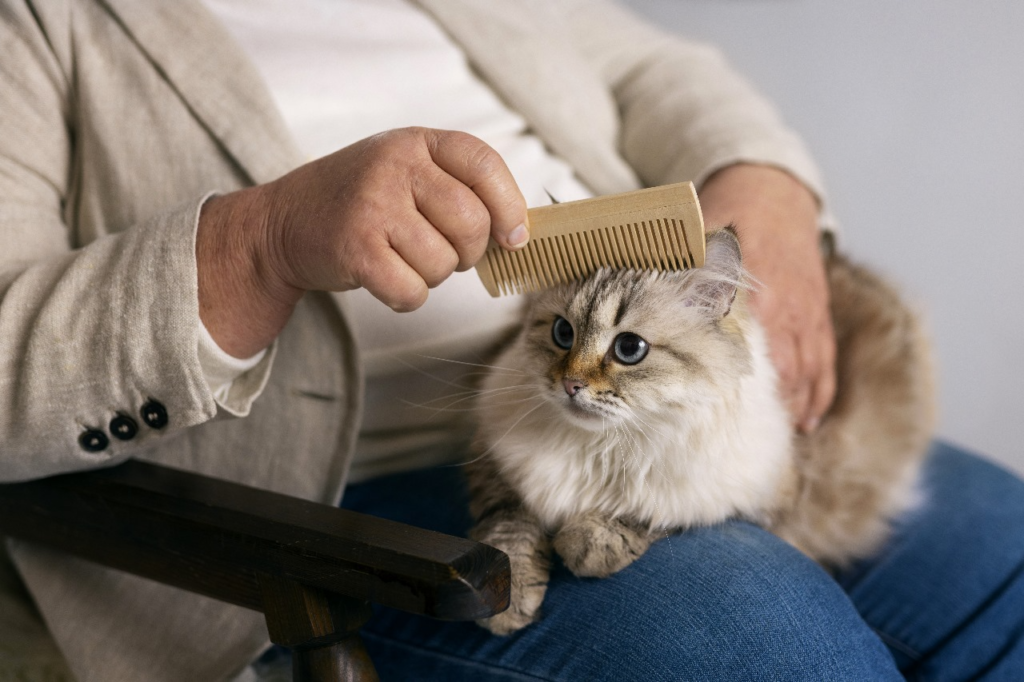
- Prevents mats & tangles. Long-haired and dense-coated cats are at higher risk; a VetCompass UK analysis found 12.7% of Persians presented with hair-coat disorders (incl. matting). Regular brushing helps prevent painful mats before they form.
- Removes loose fur → fewer hairballs. Cats spend ~30–50% of their day grooming, ingesting hair (Cornell). Diet trials show fiber + psyllium increased fecal hair excretion within 14 days, supporting the idea that less loose coat = less ingestion. Shedding peaks with photoperiod shifts (spring/fall), so extra brushing then helps. (2)
- Distributes natural oils & supports skin health. Grooming spreads sebum and saliva through the coat; brushing assists this process and helps lift debris from the skin surface.
- Bonding & early health checks. Brushing sessions let you spot fleas/ticks, redness, lumps early and can be a positive, low-stress interaction that many cats tolerate better when introduced gradually.
Grooming Long-Haired Cats in Montreal
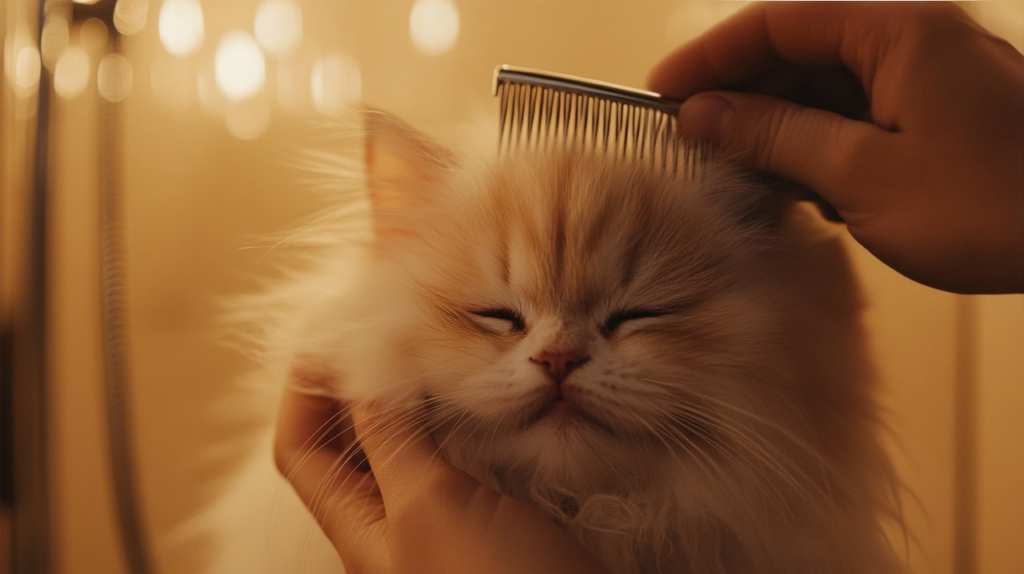
Long-haired cats like Persians and Maine Coons need near-daily attention, especially during seasonal coat changes. These breeds are naturally prone to tangles and mats, making consistent grooming essential to keep their coats comfortable and healthy.
Best Brush for Long-Haired Cats
- Slicker Brush – Great for daily use, it lifts out loose fur and tangles. Choose one with soft-tipped pins so it won’t scratch sensitive skin.
- Wide-Toothed Metal Comb – Ideal for tricky areas like the belly and armpits, where knots form easily.
- Undercoat Rake – Comes in handy during spring and fall shedding seasons when that dense undercoat loosens up.
- Dematting Tool – Keep this for last-resort tangles. Use gentle strokes, and if mats are too tough, it’s safer to let a groomer handle them.
Grooming Tips for Long-Haired Cats
- Brush daily to prevent mats before they “feel” to the skin (common around ears, armpits, hind legs).
- Never use scissors to cut mats—cat skin sits right under the mat and is easily nicked; clipper removal by a pro is safer.
- Be gentle with slickers to avoid abrasions; keep sessions short and calm (cat-friendly handling lowers stress).
- Increase frequency in winter as coat density changes with season/photoperiod; watch for forming tangles.
Grooming Short-Haired Cats in Montreal
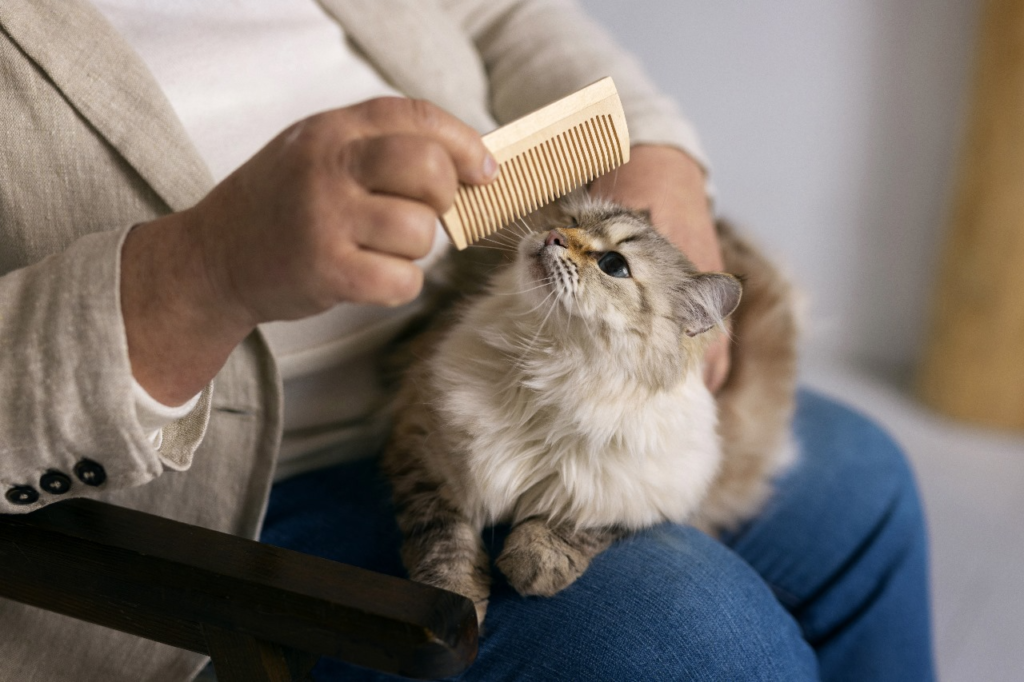
Breeds such as British Shorthairs with short hair still get benefits from weekly grooming. Along with decreased fur, skin oil gets stimulated and shedding is reduced and smoothing gets done with brushing.
Best Brushes for Short-Haired Cats
- Bristle Brush – coat gets sleek with spread oil on coat and brushed dirt is dirt.
- Rubber Grooming Glove – for cats that are brushed with hate, they are petted cause the hostile seize them.
- Soft-Tipped Slicker Brush – For less under coat and less shedding, grout is softer with less pin to prevent skin scratched.
- Fine-Toothed Comb – Best for examining fine details such as looking for fleas and in sensitive areas than for heavy shedding.
Short-Haired Cat Grooming Tips
- Brush at least once a week brush at least once a week to get rid of loose fur.
- Make grooming bonding time—use positive reinforcement like treats and praise to get them through the sessions.
- In Montreal winters, treat static combat with moisturizing sprays or a damp cloth before brushing. Static increases in short coats as a result of dry air.
Seasonal Grooming Challenges in Montreal
When it comes to living in a city like Montreal means that you have to take care of your cat’s needs. This is something to keep in mind throughout the whole year.
- Static & Dryness: Humidifiers are essential in Montreal. These help with almost every indoor cat and a simple wipe with a wet cloth before brushing helps a ton.
- Winter Coats: Even indoor cats grow denser coats in the cold. Brushing more often keeps mats under control and reduces extra shedding around the house.
- Paw Care: Montreal’s pavements are really not that forgiving. Dab of balms help with the pads of the feet.
- Senior Cats: Cats with thicker coats often have trouble grooming themselves. Cats who grow older require more assistance.
Final Thoughts
Grooming a cat involves more than simply cleaning a coat; it also concerns the cat’s ease, health, and general joy. Whether it’s a dainty, long-haired Persian or a dauntless, short-haired tabby, the proper grooming equipment accompanied by the right care does wonders.
Using the right brush for long-haired cats or using the right brush for short-haired cats helps you avoid mats and shedding while also building trust and a closer relationship together.
Here, we provide Montreal cat parents with expert grooming tips, product suggestions, and care guides specific to each coat type. 🐾
👉 Montreal cat parents, check out more grooming tips and the right brush for your cat at Meow Care Hub.
FAQs About Cat Grooming in Montreal
1. What is the best brush for long-haired cats?
A slicker brush and wide-toothed comb are essential. For shedding, use an undercoat rake.
2. What is the best brush for short-haired cats?
A bristle brush or rubber grooming glove works best for removing surface fur and keeping the coat shiny.
3. How often should I brush my cat?
Long-haired cats need daily grooming, while short-haired cats benefit from weekly brushing.
4. Do Montreal winters affect my cat’s grooming needs?
Yes! Winter coats can thicken, and indoor heating can cause dry skin. Increase brushing and use a humidifier.
5. Can brushing help reduce hairballs?
Absolutely. Regular brushing removes loose fur before your cat swallows it, reducing hairball risk.
Resources:

